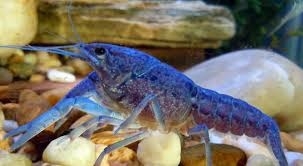
Vertebrates have red blood. The colour comes from a molecule called haemoglobin, which is found in red blood cells. Haemoglobin carries oxygen around the body and it uses iron atoms to hold the oxygen and then release it.
Some invertebrates use a molecule called haemocyanin to carry oxygen around their bodies using copper atoms instead of iron. Snails, lobsters and spiders actually have blue blood (properly called haemolymph). The colour comes from the copper atoms in the haemocyanin molecule, which is blue when it is carrying an oxygen atom. It is dissolved directly into their ‘blood’ instead of being enclosed in blood cells.
Haemocyanin, like haemoglobin and chlorophyll in green plants, is a metalloprotein. This is a protein that contains metal atoms. Nature has plenty of examples of metalloproteins. In fact, plant and animal life forms have evolved with a basic need for metals.
A haemocyanin molecule contains two copper atoms that bind a single oxygen molecule (O2) and then release it where it is needed. Haemocyanin is a bluish purple colour when it is carrying an oxygen molecule as seen here beneath the carapace of a Cancer productus crab. Once haemocyanin releases its oxygen, it is colourless.
Credit : Copper Development Association
Picture Credit : Google



